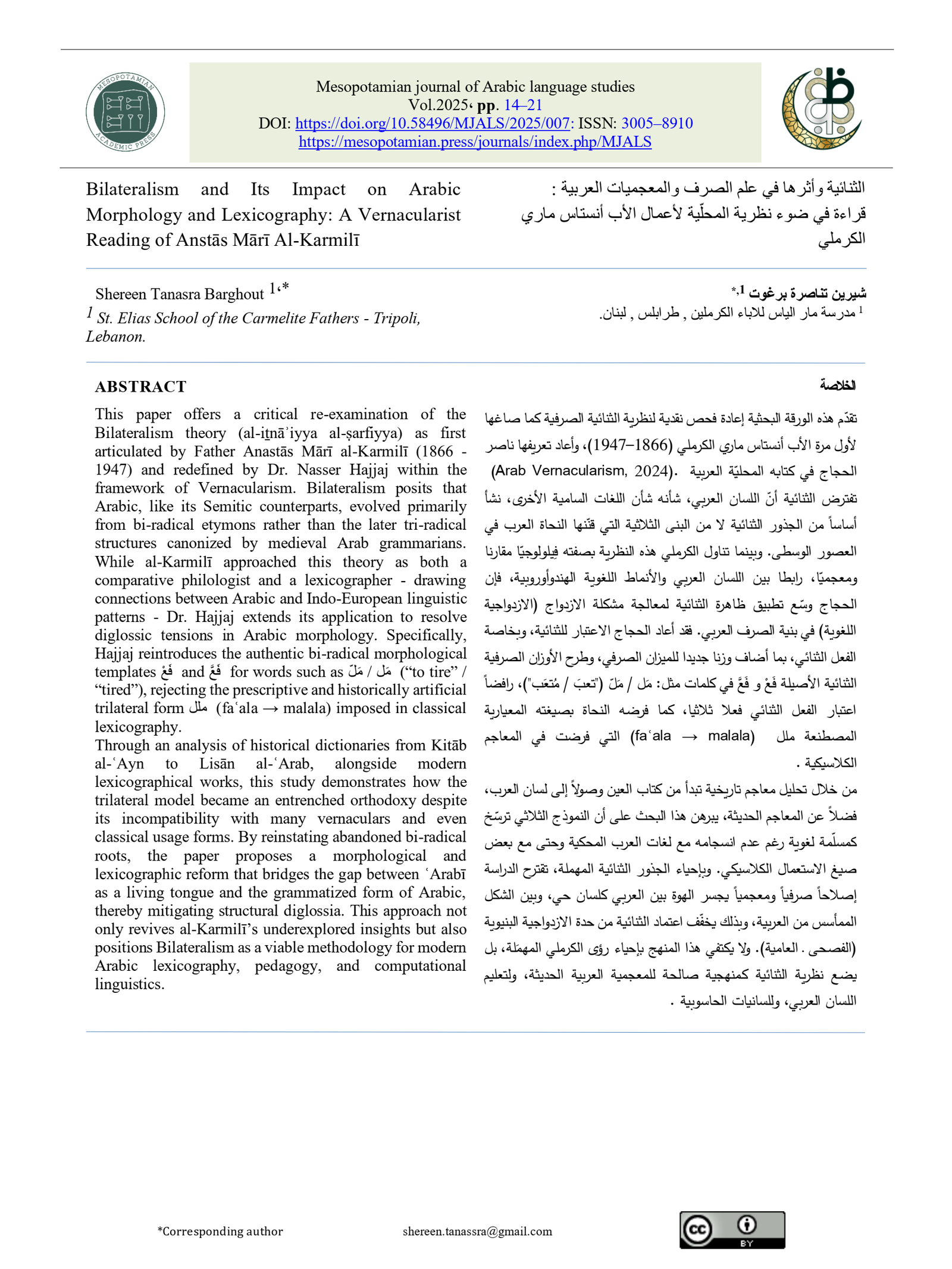Biliteralism and Its Impact on Arabic Morphology and Lexicography: A Vernacularist Reading of Anstās Mārī Al-Karmilī
Main Article Content
Abstract
This paper offers a critical re-examination of the Biliteralism theory (al-iṯnāʾiyya al-ṣarfiyya) as first articulated by Father Anastās Mārī al-Karmilī (1866 - 1947) and redefined by Dr. Nasser Hajjaj within the framework of Vernacularism. Biliteralism posits that Arabic, like its Semitic counterparts, evolved primarily from bi-radical etymons rather than the later tri-radical structures canonized by medieval Arab grammarians. While al-Karmilī approached this theory as both a comparative philologist and a lexicographer - drawing connections between Arabic and Indo-European linguistic patterns - Dr. Hajjaj extends its application to resolve diglossic tensions in Arabic morphology. Specifically, Hajjaj reintroduces the authentic bi-radical morphological templates فَعْ and فَعَّ for words such as مَل / مَلّ (“to tire” / “tired”), rejecting the prescriptive and historically artificial trilateral form ملل (faʿala → malala) imposed in classical lexicography.
Through an analysis of historical dictionaries from Kitāb al-ʿAyn to Lisān al-ʿArab, alongside modern lexicographical works, this study demonstrates how the trilateral model became an entrenched orthodoxy despite its incompatibility with many vernaculars and even classical usage forms. By reinstating abandoned bi-radical roots, the paper proposes a morphological and lexicographic reform that bridges the gap between ʿArabī as a living tongue and the grammatized form of Arabic, thereby mitigating structural diglossia. This approach not only revives al-Karmilī’s underexplored insights but also positions Biliteralism as a viable methodology for modern Arabic lexicography, pedagogy, and computational linguistics.
Article Details
Issue
Section

This work is licensed under a Creative Commons Attribution 4.0 International License.
